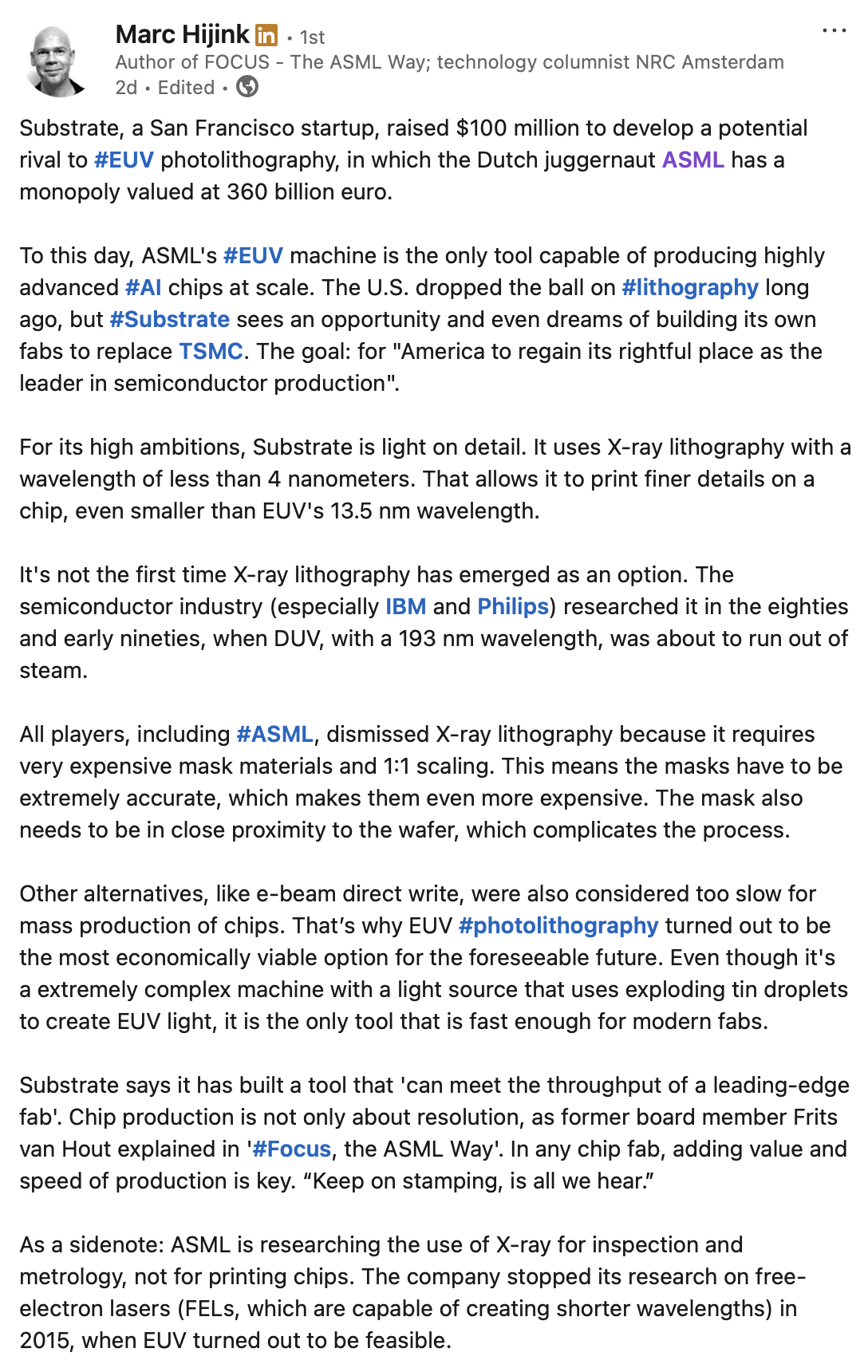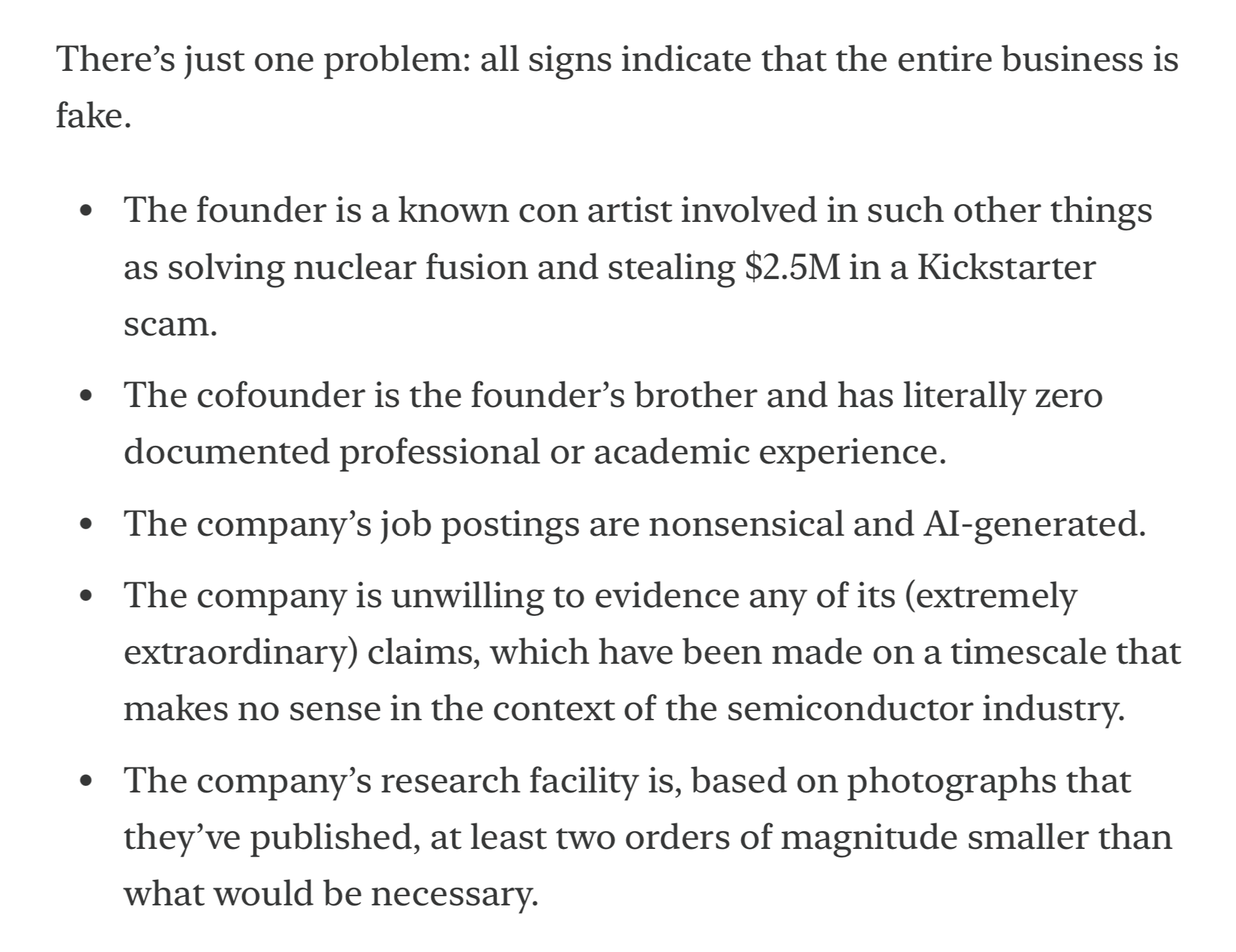Summary of the post: Substrate, a San Francisco-based startup, has raised $100 million to challenge ASML’s monopoly on EUV photolithography—a technology critical for producing advanced AI chips. ASML’s EUV machines are currently the only tools capable of mass-producing such chips, and the company dominates a market valued at €360 billion. Substrate aims to revive X-ray lithography, which uses wavelengths under 4 nm (finer than EUV’s 13.5 nm), to enable even smaller chip features. However, X-ray lithography was previously abandoned by the industry, including ASML, due to high costs, the need for extremely precise 1:1 masks, and proximity challenges.
While alternatives like e-beam direct write were deemed too slow, EUV became the standard despite its complexity. Substrate claims its new tool can match the speed of leading-edge fabs, addressing both resolution and production efficiency. ASML itself has only explored X-ray for inspection, not chip printing, after EUV proved viable.
Substrate’s vision extends to building its own fabs, potentially reducing reliance on TSMC and restoring U.S. leadership in semiconductor production—though details on how it will overcome past obstacles remain sparse.


